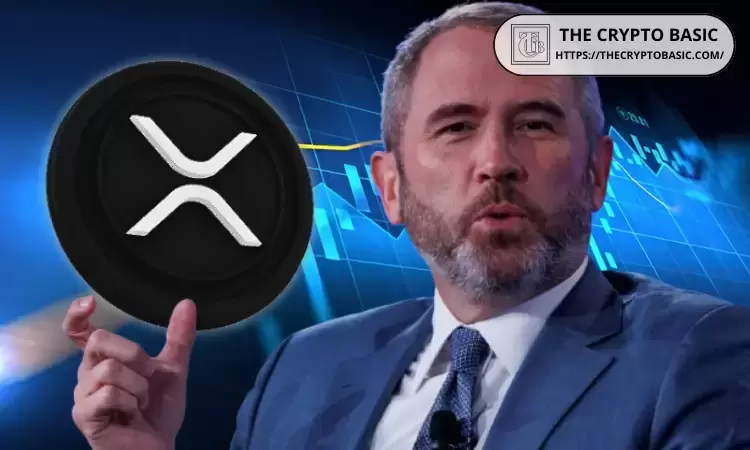 |
|
 |
|
 |
|
 |
|
 |
|
 |
|
 |
|
 |
|
 |
|
 |
|
 |
|
 |
|
 |
|
 |
|
 |
|
Cryptocurrency News Articles
Robert “Bo” Hines Discusses U.S. Government’s Strategy for Acquiring More Bitcoin
Mar 22, 2025 at 10:02 am
Robert “Bo” Hines, the Executive Director of the Presidential Council of Advisers on Digital Assets, recently discussed the U.S. government’s strategy for acquiring

The U.S. government is exploring budget-neutral ways to acquire more Bitcoin, and one method could involve reassessing the value of gold certificates to fund more BTC purchases, according to an interview with Robert “Bo” Hines, Executive Director of the Presidential Council of Advisers on Digital Assets.
Speaking on the Crypto In America podcast, Hines shed light on the administration's strategy for integrating Bitcoin into the government's treasury.
Earlier this year, President Donald Trump signed an executive order establishing the Strategic Bitcoin Reserve (SBR), which will hold the government’s Bitcoin assets, and a separate Digital Assets National Stockpile for altcoins. The order also mentioned the U.S. government’s intention to acquire Bitcoin in a “budget-neutral” manner in the future.
Many have been left wondering what strategies would be employed to increase Bitcoin holdings.
When asked how the government could buy more Bitcoin without increasing taxes or creating a budget deficit, Hines pointed to a potential method mentioned in the Bitcoin Act of 2025, a bill sponsored by Senator Cynthia Lummis.
The strategy involves reassessing the value of gold certificates held by the U.S. government, which are currently valued at around $172 per ounce.
Hines explained that the government could realize the gains from an updated valuation of these gold certificates, using the additional funds to purchase more Bitcoin.
“We could realize the gains on that, and that would be a budget-neutral way to acquire more Bitcoin,” Hines said.
This idea aligns with the administration's aim to explore creative solutions for expanding Bitcoin reserves without relying on taxpayers.
Hines was also asked whether the U.S. might sell some of the gold stored in Fort Knox to fund Bitcoin acquisitions. While he acknowledged the possibility, he emphasized the importance of remaining budget-neutral and avoiding any burden on taxpayers.
“If that option remains budget-neutral and doesn't burden taxpayers, it could be considered,” he added.
Hines assured listeners that the administration is discussing various options for acquiring Bitcoin, with high-level officials like Treasury Secretary Scott Bessent and Commerce Secretary Howard Ludnick participating in these conversations.
However, he remained cautious about committing to a specific strategy, noting that the government is keeping an open mind and wants to consider a variety of ideas before making a decision.
The conversation then touched upon the government's approach to other cryptocurrencies.
When asked about the possibility of the U.S. acquiring other digital assets, such as Ethereum, XRP, Solana, and Cardano, in addition to Bitcoin, Hines responded by explaining that Bitcoin holds a special status due to its classification as a commodity, in contrast to other cryptocurrencies that may be deemed securities.
"Bitcoin is different. It's unique. It has intrinsic stored value and is widely accepted," Hines stated, emphasizing Bitcoin's position as the foundational digital asset in the global market, which permitted the creation of two distinct reserves: the Strategic Bitcoin Reserve (SBR) for Bitcoin, and the Digital Assets National Stockpile for altcoins.
These five cryptocurrencies, selected based on market capitalization, are intended for inclusion in the Digital Assets National Stockpile, according to Hines.
Furthermore, he highlighted that the administration has a broader support for innovation across the crypto space, and the government is open to further exploration and investment in emerging digital assets.
This discussion offers a glimpse into the U.S. government's evolving strategy for managing digital assets, particularly Bitcoin, as it explores creative and budget-neutral methods for expanding its cryptocurrency holdings in the coming year.
Disclaimer:info@kdj.com
The information provided is not trading advice. kdj.com does not assume any responsibility for any investments made based on the information provided in this article. Cryptocurrencies are highly volatile and it is highly recommended that you invest with caution after thorough research!
If you believe that the content used on this website infringes your copyright, please contact us immediately (info@kdj.com) and we will delete it promptly.
-

- Raphael Coin (RAPH) Launches Its First Tokenized Artwork: "Recto: Study for the Battle of the Milvian Bridge"
- Apr 25, 2025 at 07:45 pm
- Raphael Coin (RAPH) is a new project powered by Gleec's blockchain technology. It has launched its first tokenized artwork: "Recto: Study for the Battle of the Milvian Bridge."
-

-

-

-

-

- Terra Luna Classic (LUNC) Price Surges 40% as Aggressive Burn Activity and Growing Staking Ratio Grab Attention
- Apr 25, 2025 at 07:35 pm
- The Terra Luna Classic price surge is grabbing attention again. After a period of consolidation and bearish pressure, LUNC has surprised the market by rallying sharply
-

- Crypto Market Braces for Significant Token Unlocks Next Week, April 28th through May 4th, with over $183.4M of Tokens Scheduled for Release
- Apr 25, 2025 at 07:30 pm
- The crypto market is bracing for significant token unlocks next week, April 28th through May 4th, with over $183.4 million worth of tokens scheduled for release
-

-

- Ripple CEO Brad Garlinghouse Reacts to the Launch of XRP Futures on CME Group's Trading Platform
- Apr 25, 2025 at 07:25 pm
- This suggests that although XRP has existed since 2012 and has recorded increased volumes, derivative marketplaces like CME Group have stalled in launching future products for the coin.





























































